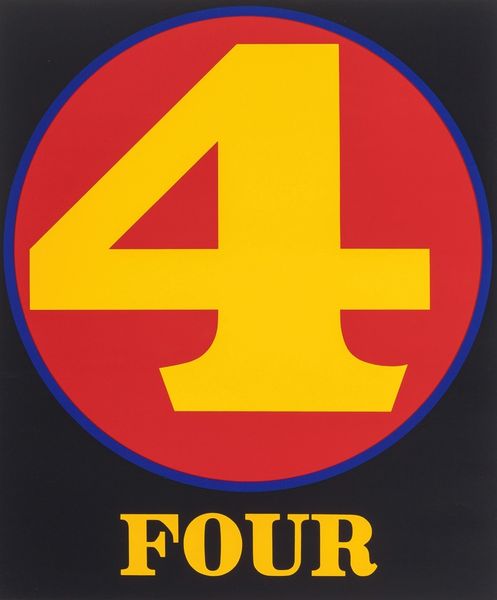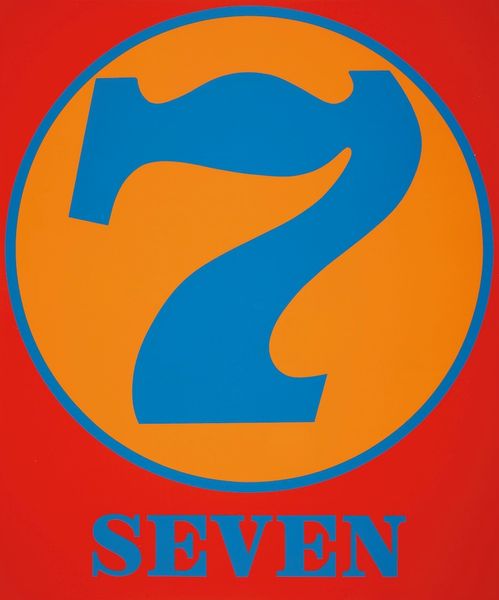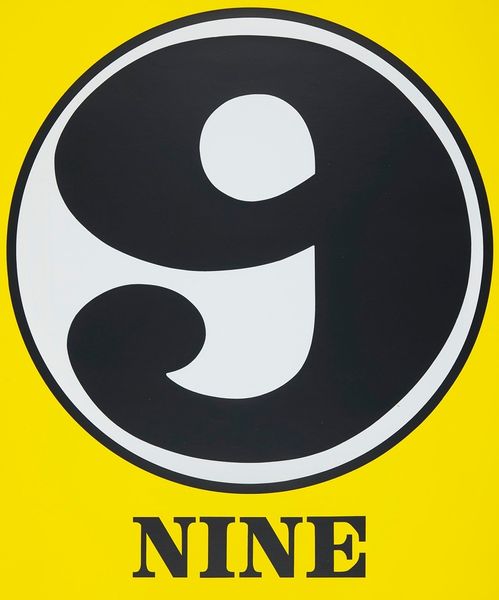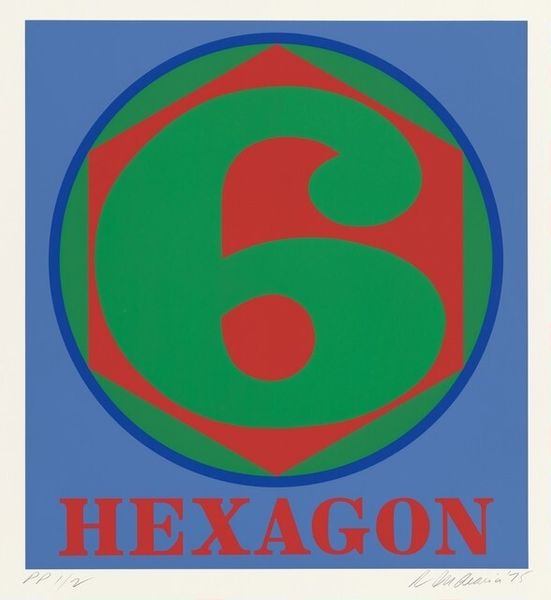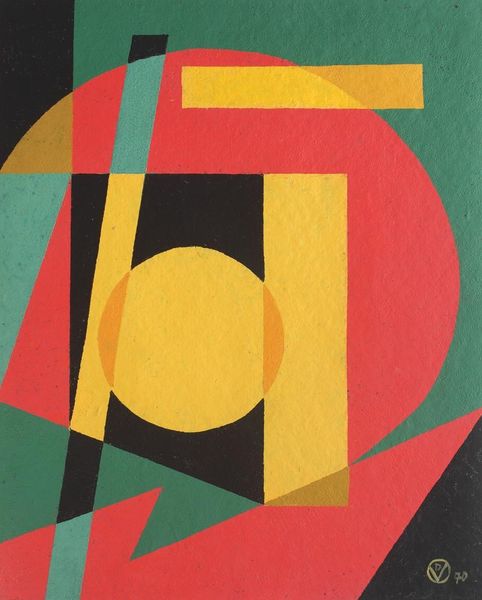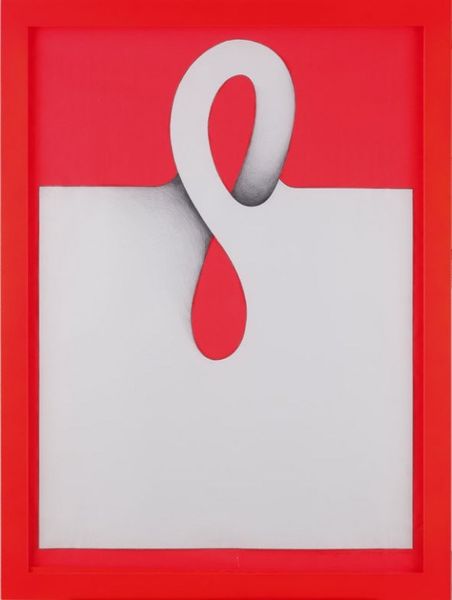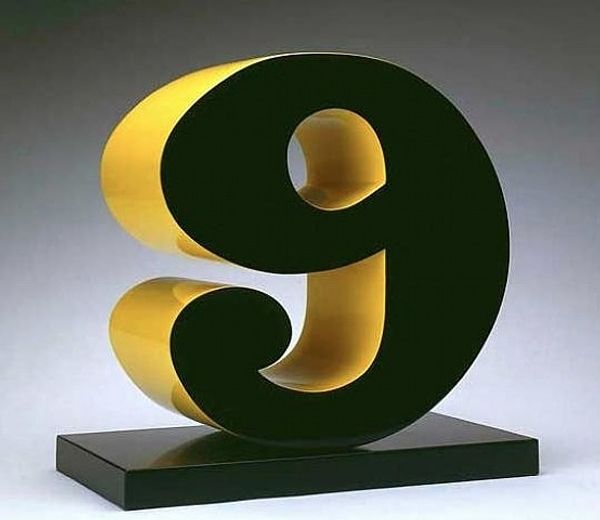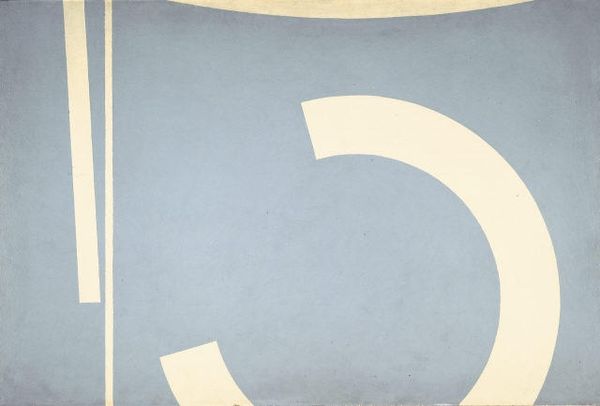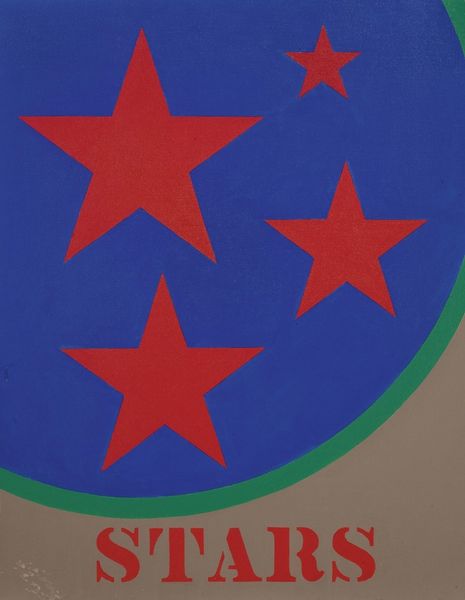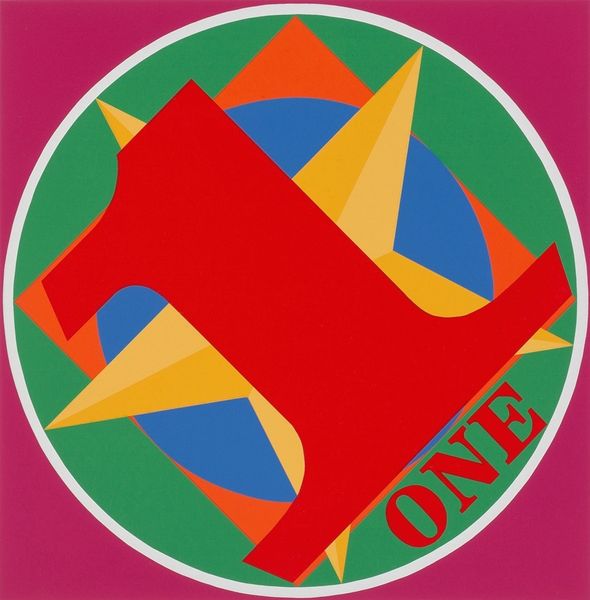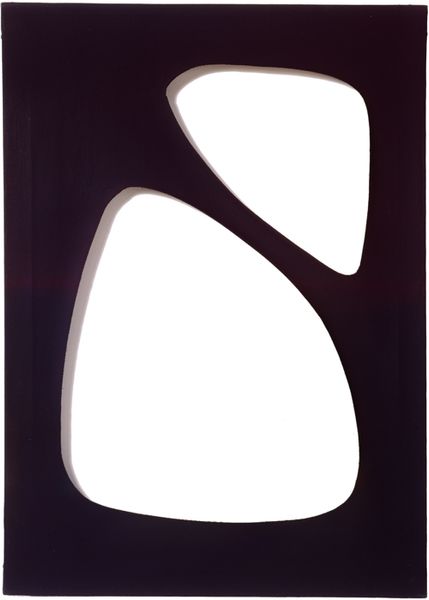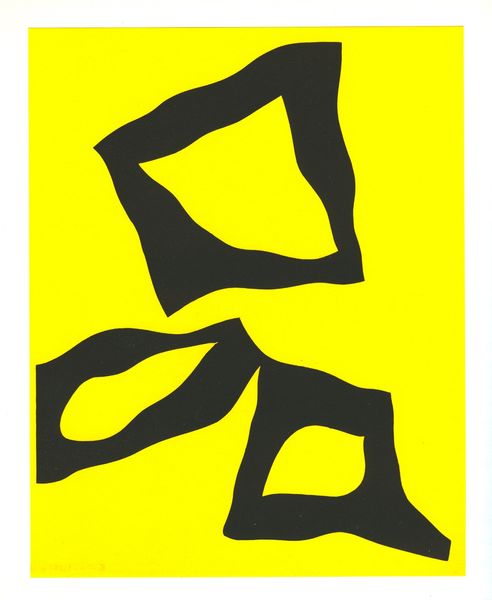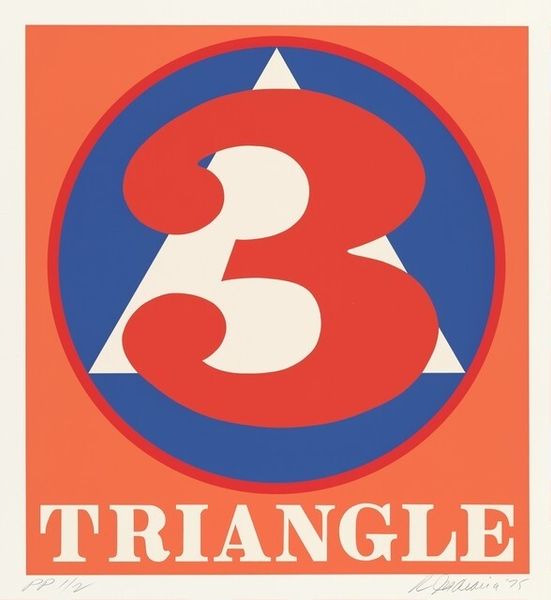
typography
#
pop art
#
typography
#
geometric
#
abstraction
#
pop-art
#
digital-art
Copyright: Modern Artists: Artvee
Editor: Here we have Robert Indiana’s “Numbers #6” from 1968. It appears to be some kind of print with hard-edged, geometric forms. The colors really pop. I’m struck by the seemingly simple composition, yet it feels impactful. What is your take on this piece? Curator: This print, like much of Indiana's work, invites us to consider the materials and modes of its production within the broader context of postwar consumer culture. How does the smooth, almost manufactured feel of the print relate to the burgeoning Pop Art movement’s embrace of commercialism? Editor: That’s interesting! I never thought about the ‘manufactured’ feel, but now that you mention it, it definitely doesn’t look hand-made. So, does the process of making this sort of artwork change the way we view traditional art, maybe craft too? Curator: Precisely! This challenges traditional art hierarchies, blurring the lines between ‘high art’ and commercial design. Look closely at the materials— what choices were made to amplify accessibility and, perhaps, mass consumption? And what does that mean for our interpretation? Editor: I guess the colours, the screen-printing, and the font choice make it instantly readable to the public. Like a sign you’d see everywhere. Curator: Exactly! Consider the labour involved in creating a piece that mimics the aesthetic of mass-produced goods. Where is the 'artist's hand' traditionally so valued? It prompts questions about value, authorship, and the artist's role in a society increasingly driven by consumption. Editor: Wow, seeing it that way completely changes my perspective on the artwork. It’s not just a cool-looking number; it is making a statement about art production. Curator: And about the consumption of images in contemporary culture. This challenges us to be more conscious of the process behind the images we are bombarded with every day. Editor: That gives me a lot to think about. It makes me curious about what other seemingly ‘simple’ art pieces might be trying to tell us about materiality and manufacturing.
Comments
No comments
Be the first to comment and join the conversation on the ultimate creative platform.

